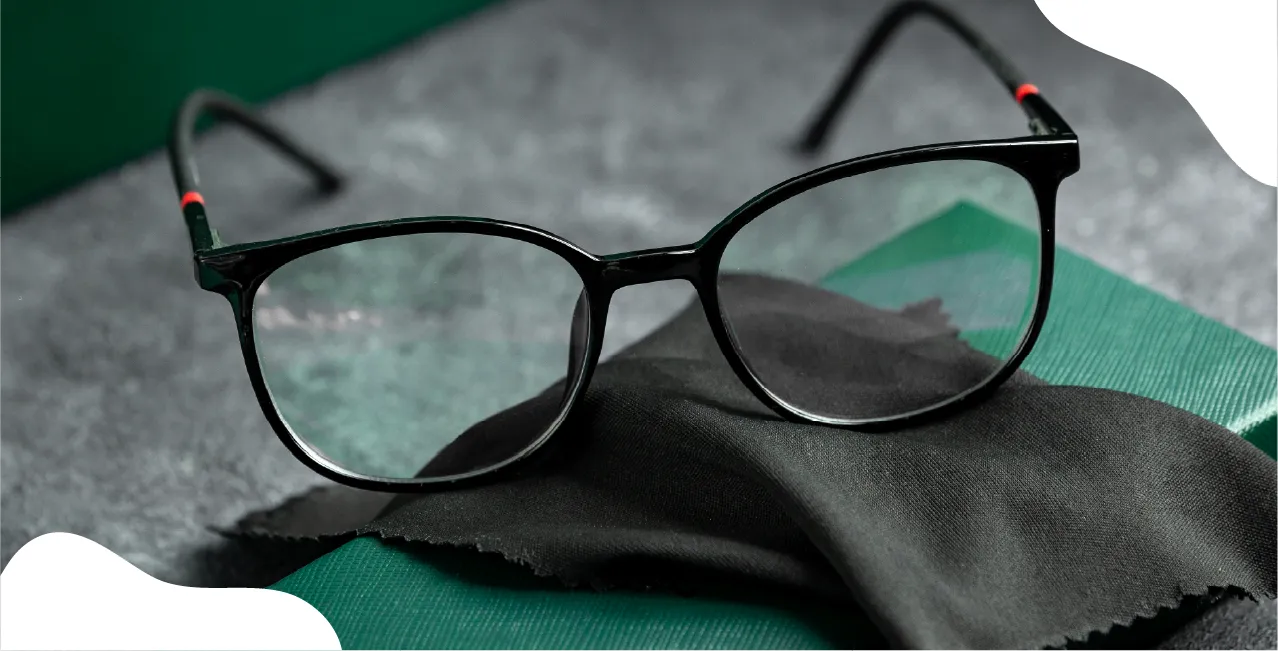
Author
LoansJagat Team
Read Time
8 Min
18 Jul 2025
GST on Spectacles – Tax Rate, HSN Code & Input Tax Rules
Ramesh owns a small optical shop in Nagpur. Last month, he sold 120 pairs of spectacles, 45 sunglasses, and 30 safety goggles. He applied 12% GST correctly to each item using HSN Code 9004.
If Ramesh had failed to apply the correct code, tax authorities could have imposed penalties exceeding ₹25,000 during the GST audit. That kind of mistake is more than a simple accounting error; it’s an avoidable financial loss.
GST classifications and HSN Code 9004 understanding are not just the responsibility of chartered accountants (CAs). Business owners, factory managers, online sellers, and even informed consumers need this knowledge.
GST on Spectacles, Sunglasses & Goggles – A Short Introduction
The Goods and Services Tax (GST) on eyewear is an indirect tax that the government levies on the sale of spectacles, sunglasses, safety goggles, and other protective eyewear. All of these products fall under HSN Code 9004 and attract a uniform 12% GST rate, which helps ensure consistency in taxation and simplifies invoicing.
For example, a local optical shop in Pune sold 50 spectacles, 20 sunglasses, and 10 safety goggles in one month, with each item priced at ₹2,000. This resulted in total revenue of ₹160,000. By applying the standard 12% GST under HSN Code 9004, the shop collected ₹19,200 in GST.
This example demonstrates that GST on eyewear is not merely a billing formality; it has a tangible impact on pricing, profit margins, and regulatory compliance.
GST on Spectacles, Sunglasses & Goggles – Categorised by Price and Applicable GST
Eyewear in India is not just a tool for vision correction or fashion—it is also regulated under the Goods and Services Tax (GST) regime. According to Indian tax laws, all forms of eyewear, including spectacles, sunglasses, and protective goggles, fall under HSN Code 9004 and are uniformly taxed at 12% GST, regardless of their price range or functionality.
This standardised tax rate simplifies billing for retailers and distributors while also offering clarity and predictability for consumers. Below is a breakdown of common eyewear categories based on pricing and their corresponding GST rates:
Note:
Although the prices vary significantly depending on brand, utility, and technology, the GST rate remains constant at 12% for all eyewear products falling under HSN Code 9004. This means both affordable and premium eyewear items are taxed uniformly, ensuring a level playing field for manufacturers and retailers.
This uniformity also assists in easy compliance and accurate tax calculation, particularly for businesses dealing in a diverse range of eyewear products.
HSN Codes for Eyewear – Types & Their Codes
When it comes to trade, taxation, and billing, correct classification under the Harmonised System of Nomenclature (HSN) is essential. All eyewear products in India, whether meant for vision correction, UV protection, industrial use, or recreation, are categorised under HSN Code 9004.
This unified classification under a single HSN code greatly benefits both businesses and consumers. It eliminates confusion during billing, simplifies customs processing, and ensures uniformity in tax application across product types.
Below is a table showing the different types of eyewear and their common HSN Code:
Key Insight:
Regardless of their function or price point, all these eyewear items fall under HSN Code 9004. This uniformity reduces administrative burdens and supports seamless tax compliance across the supply chain from manufacturers and wholesalers to retailers and end consumers.
Types of Eyewear & Their GST Applicability
Each type of eyewear serves a specific purpose, ranging from everyday vision correction to specialised industrial or recreational use. Despite these varying applications, all eyewear classified under HSN Code 9004 attracts a flat GST rate of 12%.
This consistency not only ensures fairness in pricing but also aids businesses in applying the correct GST rate during invoicing, thereby reducing the chance of penalties or audit-related issues.
Here’s a detailed breakdown of eyewear categories along with their intended usage and GST implications:
Example: A construction worker buying safety goggles for ₹750 will pay an additional ₹90 in GST, bringing the total cost to ₹840. Likewise, a fashion-conscious buyer purchasing UV-protected sunglasses worth ₹4,000 will be charged ₹480 as GST.
Impact of GST on the Eyewear Industry:
The introduction of the Goods and Services Tax (GST) has significantly reshaped the eyewear industry in India. With a unified GST rate of 12% under HSN Code 9004, the industry has seen a more structured and transparent tax regime that benefits both sellers/manufacturers and consumers.
For Sellers & Manufacturers
Example: Let’s consider a manufacturer producing 1,000 units of industrial safety goggles every quarter, selling each at ₹600. The total sales revenue becomes ₹6,00,000. At a flat 12% GST rate, they collect ₹72,000 in GST from buyers and remit it to the government. Since the product falls under HSN Code 9004, this transaction is eligible for Input Tax Credit (ITC) on raw materials such as polycarbonate lenses, elastic straps, and protective coatings.
Key Impacts:
- Simplified Export Documentation: Since GST is harmonised under HSN Code 9004, it aligns with global trade codes and simplifies compliance during cross-border sales.
- Transparent B2B Pricing: Businesses can easily quote ex-GST and GST-inclusive prices to their clients, which improves trust and clarity in B2B transactions.
- Lower Litigation Risk: Accurate classification and uniform GST reduce the risk of audits, penalties, and tax disputes.
- Cash Flow Predictability: With access to ITC, working capital is better managed since GST paid on inputs can be offset against output liability.
For Consumers
Example: A parent purchasing prescription eyeglasses worth ₹3,000 for their child. At 12% GST, an additional ₹360 is added, making the final invoice amount ₹3,360. There are no hidden charges or inconsistencies because GST rates are fixed across all brands and types under HSN Code 9004.
Key Impacts:
- Uniform Pricing Across Brands: Whether purchasing from a local store or a branded retail outlet, consumers pay the same GST rate, ensuring fairness.
- Clarity on Tax Breakdown: Every bill clearly mentions the GST component, helping consumers understand what portion of the cost is tax.
- Budget Planning: Predictable tax rates help individuals and families plan better for eyewear purchases, especially for children or elderly members with specific optical needs.
Input Tax Credit (ITC) on Eyewear
GST law allows businesses to claim Input Tax Credit (ITC) for the GST paid on purchases made for business purposes. For companies in the eyewear sector, such as optical shops, retailers, manufacturers, and laboratories, this provision provides substantial financial benefits.
Example: An eyewear brand like “VisionPro” purchases raw materials, including lenses, frames, anti-glare coatings, and display stands, totalling ₹2,00,000. With 12% GST, they pay ₹24,000 in tax. Since these inputs contribute directly to the production and sale of eyewear covered under HSN Code 9004, VisionPro can claim the entire ₹24,000 as ITC against its output GST liability.
Key Points About ITC:
- Eligibility: Only businesses registered under GST are allowed to claim ITC.
- Accurate Documentation is Crucial: ITC claims must be supported by valid GST invoices that mention HSN Code 9004.
- Reduces Tax Burden: ITC helps eliminate the cascading effect of tax on tax, ultimately lowering the net GST payable by the business.
- Boosts Profit Margins: When businesses efficiently manage their ITC, they can offer better prices to consumers and improve their bottom line.
Conclusion
HSN Code 9004 provides a consistent 12% GST on all types of eyewear, namely spectacles, sunglasses, and safety goggles. This makes billing easier, increases tax compliance, and allows businesses to claim input tax credits easily. For end-users, it provides transparency and uniformity in pricing. Whether you are producing, trading, or purchasing eyewear, knowledge of this classification facilitates smooth transactions and regulatory synchronisation.
FAQs
1. What is the GST rate on spectacles and goggles?
All spectacles, sunglasses, safety goggles, and similar eyewear products attract 12% GST as per HSN Code 9004.
2. Is GST applicable on prescription glasses?
Yes. Whether they’re ready-made or custom-made, prescription glasses are taxed at 12% GST.
3. Are sunglasses also taxed at 12%?
Yes, all types of sunglasses, including UV-protected and designer brands, fall under HSN Code 9004 and are taxed at 12%.
4. Can businesses claim ITC on eyewear sales?
Absolutely. Registered businesses can claim Input Tax Credit on components or products bought for resale under HSN 9004.
5. Does price affect the GST rate on eyewear?
No. Eyewear products under HSN 9004 are taxed uniformly at 12%, irrespective of the price.
Other Important GST Pages | ||||
About the Author

LoansJagat Team
‘Simplify Finance for Everyone.’ This is the common goal of our team, as we try to explain any topic with relatable examples. From personal to business finance, managing EMIs to becoming debt-free, we do extensive research on each and every parameter, so you don’t have to. Scroll up and have a look at what 15+ years of experience in the BFSI sector looks like.

Quick Apply Loan
Subscribe Now


